Sustainable Development Goals (SDGs) / 2030 Agenda
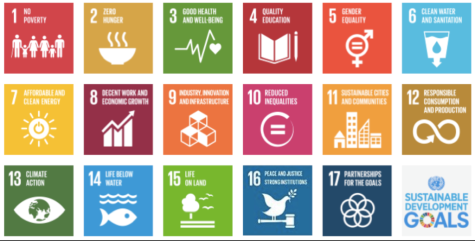
➡️ UN SUSTAINABLE DEVELOPMENT GOALS Guide (2030 Agenda)
The Sustainable Development Goals (SDGs) and the 2030 Agenda were adopted by the member states of the United Nations in 2015. The SDGs are centred around 17 goals for sustainable development with the aim of completion by 2030. These goals are universal, apply to all countries regardless of their level of development, and require global cooperation.
The goals cover a wide range of issues, including poverty and hunger eradication, gender equality, clean water and energy, education, climate and environmental protection, access to quality healthcare, decent working conditions, and peace.
Agenda 2030 is the political framework that supports the SDGs. It was adopted by the United Nations and sets out clear goals and principles in order to achieve the ambitious global targets. The 2030 Agenda philosophy "Leave No One Behind" further emphasises the importance of inclusion and equality in the creation of a sustainable world.
Each country has created a national action plan to integrate the SDGs into their existing policies and programs. Alongside this, monitoring has been put in place to track implementation and progress. Significant financing is required to meet these goals including the SDG Fund as well as national and international partners and private investments which are being used to advance progress.
Our platform for the SDGs is a vital educational and awareness tool which provides free independent resources, critical analysis, and promotes and aids the networking of NGOs and activists who are putting additional pressure on governments and businesses to fully commit to the success of these goals.

With over 800 links to background information, important news sources, publications, and key resources, Better World Info is the SDG tool you mustn’t be without. We recommend following our excellent Twitter Lists for up to the minute developments on the SDGs, and other related topics such as the United Nations, Sustainability, International development, and Peace.
For German speakers be sure to check out our partner site Bessere Welt Info where you will find over 100 links to the SDGs from a European perspective, as well as a critical look at the deficits and limitations of the 17 goals.
Are we on track to meet the SDGs?
Implementing the SDGs is a complex and ongoing process. We are currently halfway to the deadline, but not halfway to achieving the SGDs. The recent UN Sustainable Development Goals Progress Report revealed that we are on track to meet only 12% of targets by 2030. Progress on 50% of the targets is weak, and 30% have either stalled or actually gotton worse.
Ramifications from the Covid-19 pandemic meant that three decades of steady progress were effectively stalled. Of note, despite lack of progress being reported across the board, the world's poorest and most vulnerable continue to suffer the worst effects of current unprecedented global challenges.
- Poverty (Goal 1)
In 2022, 9% of the world's population lived in extreme poverty, just below the 10% threshold. This shows encouraging progression, however, recorded gains vary greatly from region to region, and so even though progress has been made in some areas, there are others which remain stagnant or even in reversal.
- Health (Goal 3)
By 2021, 133 countries had already met the SDG target on under-5 mortality, with a further 13 expected to do so by 2030. Life expectancy has also increased, although again, significant differences exist from country to country.
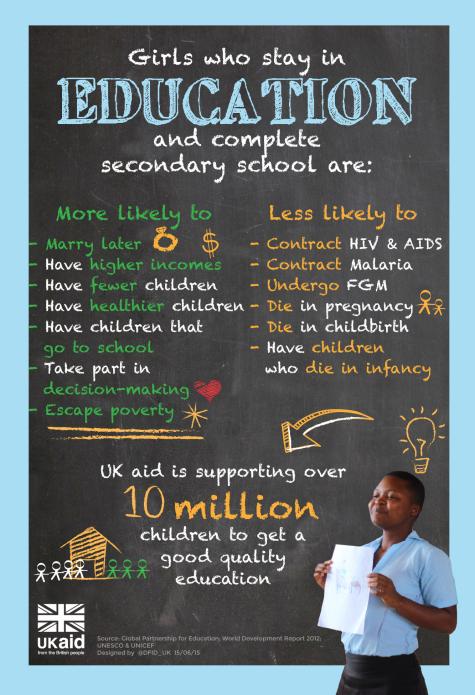
- Education (Goal 4)
Overall, a child beginning school today has a greater chance of completing their education than a child who began back in 2015. However, many obstacles created by the covid-19 pandemic and increasing instability and conflict has led to lacklustre results. In order to meet national targets, primary school completion rates need to triple between now and 2030.
- Gender Equality (Goal 5)
Over a quarter of targets to meet SDG 5 are ‘far or very far’ from the targets set for 2030. The indicator for unpaid care and domestic work, a key barrier to women's empowerment remains unmet by any country. Serious monitoring issues also exist in that only 48% of the data needed to accurately measure progress is available. This leaves women voiceless, massively hinders progress, and guarantees that issues such as gender-based violence and lack of female political representation go on unheeded.
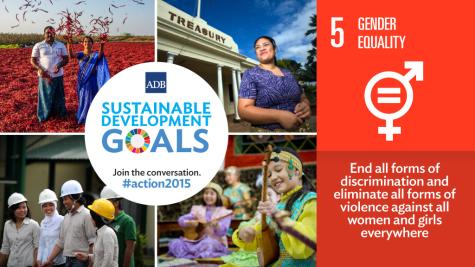
- Water (Goal 6)
29% of the global population still lack access to potable water, and 55% of people lack access to safely managed sanitation services. 50% of wastewater is left untreated, and with a serious lack of data the figures on industrial wastewater are most likely far worse. Water scarcity coupled with the growing occurrence of droughts has become a major issue. 2.3 billion people now live in water stressed areas. Although advances have been made, substantial increases in rates of progress need to increase by a minimum of threefold.
-
Climate Action (Goal 13)
We are drastically off track from limiting global warming to 1.5°C. Emissions need to already be decreasing and by 2030 need to be cut in half in order to achieve this goal. The current pace and scale of climate action plan are entirely insufficient to address climate change. Extreme weather events are already becoming more frequent and more intense leaving no region on Earth unaffected.
- Oceans & Life on Land (Goals 14 & 15)
Goals 14 and 15 are essential in the fight against biodiversity loss, extinction, deforestation, air pollution, desertification, soil degradation, and of course climate change. Of great concern is the lack of progress regarding life on land in Sub-Saharan Africa, 12 countries are currently in reverse, and 23 remain stagnant. Overall, forest cover continues to decline, albeit at a slower rate, agricultural expansion remains the largest driver of felling. The number of red list species on the extinction list also continues to grow.
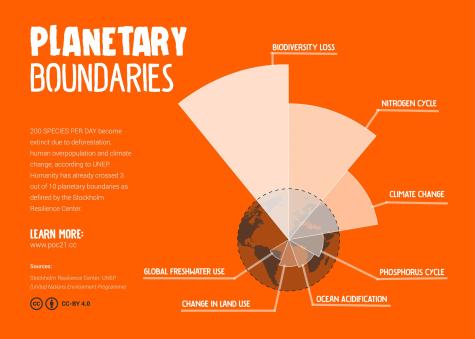
Regarding the conservation and sustainable use of our oceans, only 2% of countries are currently on target. Goals for our blue planet include ensuring a sustainable blue economy, whilst safeguarding marine life, preventing contamination, and taking a responsible approach to shipping, the fishing industry, and deep-sea mining.
- Peace, Justice, and Strong Institutions (Goal 16)
As with all the SDGs, the goals are multifaceted. Goal 16 promotes human rights, social justice, democracy, freedom of speech, and the rule of law. It fights against corruption, greenwashing, impunity, repression, armed conflict, rampant military spending, and authoritarian regimes.
It goes without saying that all goals hold equal weight, interconnected in nature, we simply cannot achieve one without the others. This snapshot reveals that the general trend towards progress is slow, and geographically unbalanced.
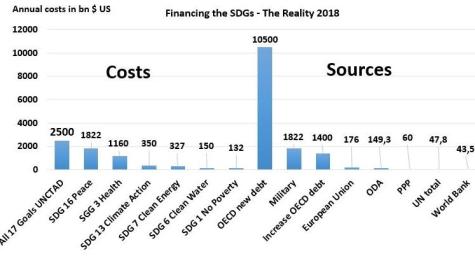
Criticism of the SDGs
Many experts claim that the SDG targets are simply not ambitious enough to bring about the profound changes needed to address such deep rooted and consequential global issues. The environmental goals in particular, for example limiting global average temperatures, are simply not enough to prevent the catastrophic consequences of climate change.
Another criticism includes the non-binding nature of the SDGs. While they provide a framework to follow, and commitments have been made, there are no legal obligations for member states to actually achieve the goals. This ensures that governments enjoy complete impunity for their lack of implementation.
This lack of commitment has created a great imbalance in the progress of the SDGs between countries and regions. Where some countries have made significant advances, others are seriously lagging behind. Various other factors which influence the ability of a nation to reach its targets include poor funding, differences in resources, weak political leadership, and the current priorities of a nation.
Financing the SDGs has become a contentious issue. Success largely relies on the availability of significant financial resources, and there are concerns that the necessary funds simply cannot be mobilized. The current global economic climate, inflation, corruption, the effects of the Russian Invasion in Ukraine, spiralling military budgets, rising insecurity, and lack of global cooperation have all hindered progress.
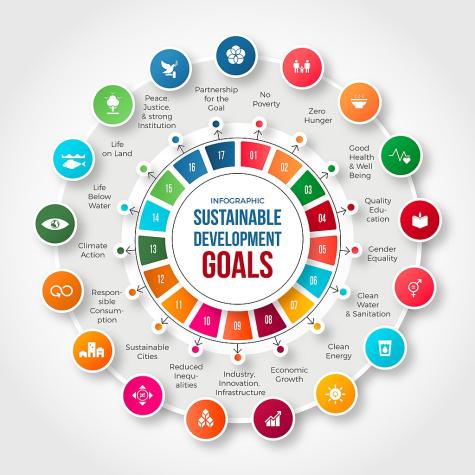
The SDGs for a Better World
Despite the above criticism, we extend our immense support for their success, and the progression of society as a whole. The SDGs still form a vital framework for improving the quality of life for everyone and solving the planets most pressing global challenges. They serve as guiding principles for governments, civil society, and the private sector to work together towards a more sustainable and just world.
Better World Info stands behind these 17 goals and aims to promote the awareness, education, and understanding of each key issue in our free, comprehensive guide to the SGDs and beyond.
In the words of the United Nations, the SDGs provide "A shared blueprint for peace and prosperity for people and the planet, now and into the future."
Through greater synergy, cooperation, and the sharing of knowledge, our aligned goals of peace and a better world for future generations will become much more achievable.
The UN is set to hold a second World Summit For Social Development in 2025 to address persistent gaps and give momentum towards the implementation of the 2030 Agenda. The summit will recommit to the principles outlined in the 1995 Copenhagen Declaration on Social Development and Programme of Action and address serious concerns that advancements in development have been slow and uneven. The summit will take place 4 to 6 November 2025 in Doha, Qatar.
Author: Maximilian Stark 12.09.23 (Translated and edited by Rachael Mellor 06.10.23) licensed under CC BY-ND 4.0 (Updated 31.01.25)
For more information on the SDGs see below ⬇️
Info on Sustainable Development Goals (SDGs) / 2030 Agenda
- General Info on the SDGs[38]
- News & Updates[39]
- Implementation & Monitoring of the SDGs (2016+)[92]
- Elaboration of the SDGs (pre-2016)[479]
- Financing for Development - Addis Ababa 2015[30]
- SDGs / Agenda 2030
- SDGs Review & Reform[91]
- World Summit for Social Development - WSSD[13]
- Selected Articles[112]